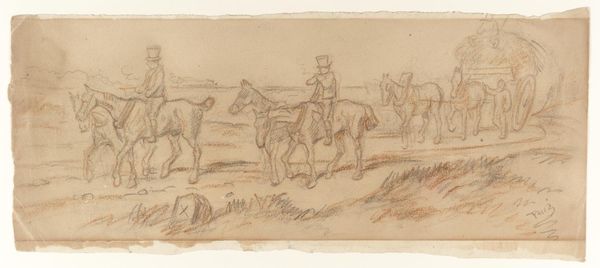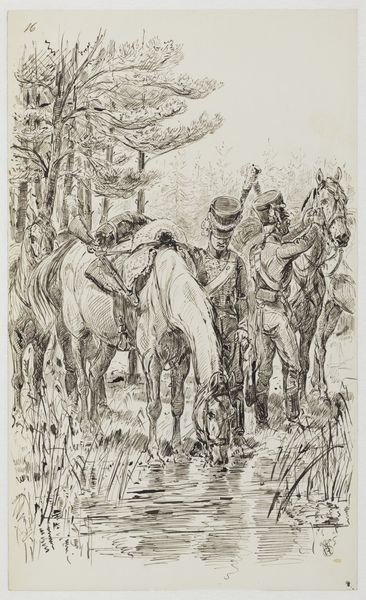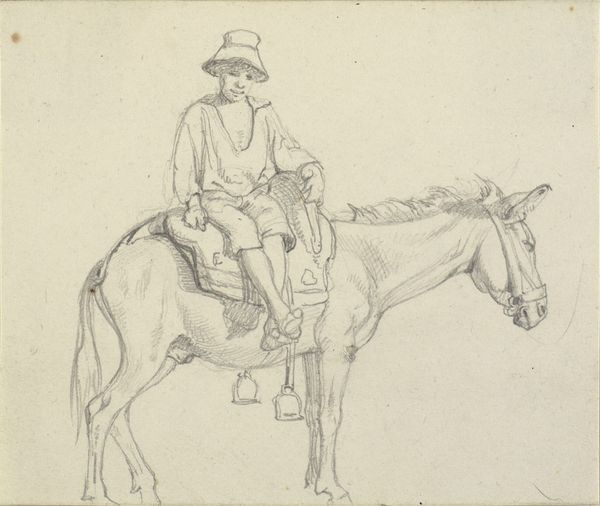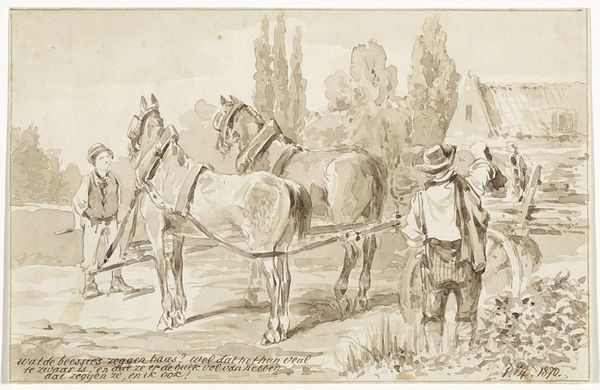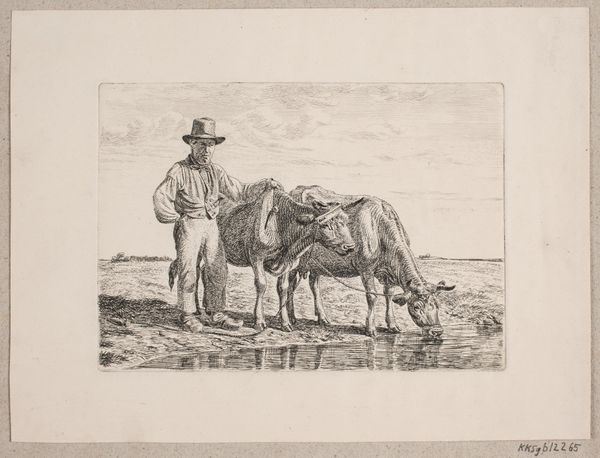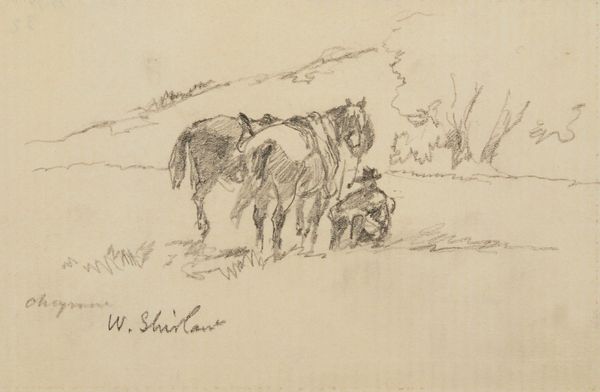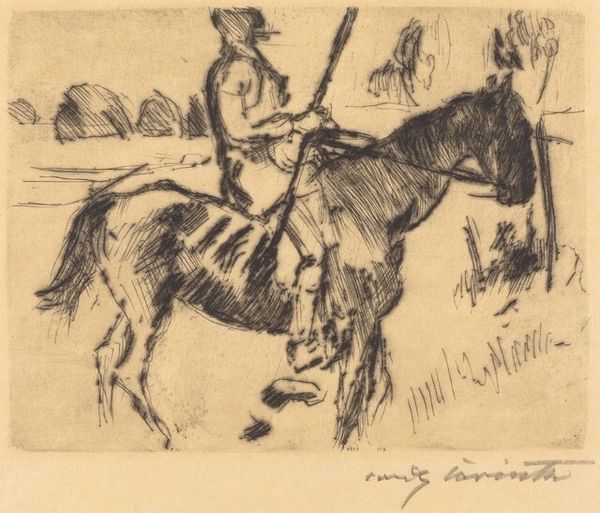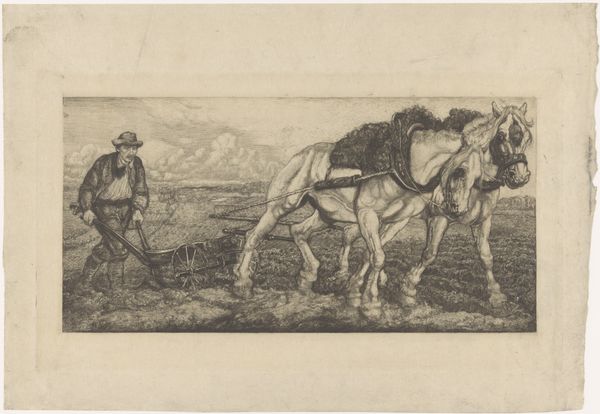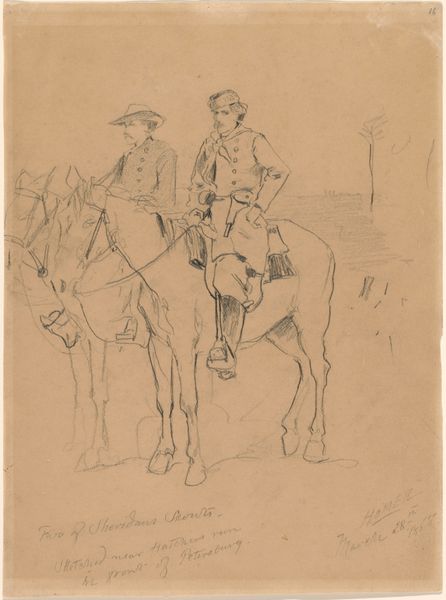
drawing, graphite
#
portrait
#
drawing
#
landscape
#
graphite
#
realism
Dimensions: 4 x 7 in. (10.16 x 17.78 cm)
Copyright: Public Domain
Curator: Welcome! Before us, we have Walter Shirlaw’s 19th-century graphite drawing, "Sketch made on Indian Reservation," currently residing here at the Minneapolis Institute of Art. Editor: My initial reaction? There is an evocative yet somber quality, almost a melancholic beauty. The gray scale makes it feel remote. Curator: Indeed. Shirlaw’s expert use of graphite allows for a delicate balance between light and shadow. Observe the textural nuances—the almost wispy landscape juxtaposed with the sharper details defining the man and horse. Editor: Precisely. That juxtaposition brings the ethics of representation to my mind, considering this work’s inscription reading, "Crow", seemingly indexing both the people and location. We must analyze how such seemingly simple visual notations might further enable harmful cultural narratives. How does Shirlaw, as an outside observer, frame his encounter, and to what extent is the representation rooted in the gaze of colonization? Curator: A powerful consideration. Focusing on the structural elements: the composition adheres to a relatively classical balance, with the figures anchored in the foreground and the landscape subtly fading into the background. The delicate hatching suggests movement while anchoring the subject within the location, further defined through written description. Editor: But that is where my hesitations deepen. "Indian Reservation" isn't just locale, it signifies imposed, controlled space. And while you see visual harmony, I notice imbalance in how cultural encounters are depicted. Curator: Shirlaw clearly focused on his formal expertise as an academic trained artist who studied realist techniques. Editor: Perhaps, yet these drawings served as both cultural records, and instruments of social influence, whether or not Shirlaw overtly intended. Our analysis must recognize these conflicting forces. Curator: A perspective well worth our attention as we leave this drawing. It prompts a more reflexive consideration on observation, documentation, and accountability across diverse voices. Editor: It asks of us whether the quiet beauty of art overshadows complicated questions of how we understand the intersection of the artist and subject when exploring culture, history, and representation.
Comments
No comments
Be the first to comment and join the conversation on the ultimate creative platform.

